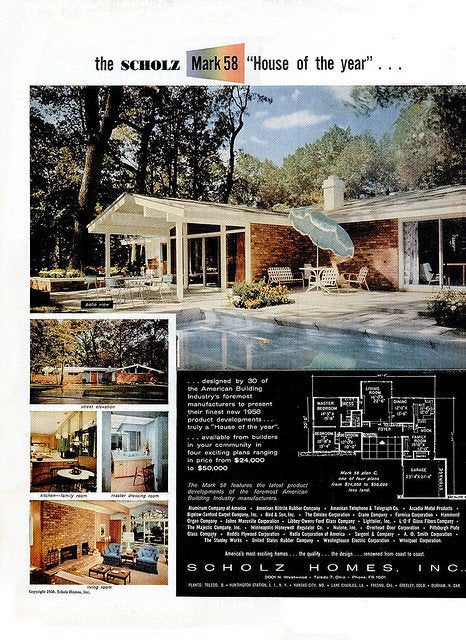The 1960s marked a new, more progressive era in many ways. But on the home front (or, rather, in Madison Avenue's depiction of it), domestic life was still pretty much the same as it had always been. Sexist.
"A majority of the 1960s was really an extension of the ‘50s," says Joshua Rowley, a reference archivist at Duke University's John W. Hartman Center for Sales, Advertising & Marketing History. "There weren’t a lot of challenges to normative values, at least not from the advertising world," he adds. And while you could binge watch all seven seasons of "Mad Men" for some credence to Rowley's point, a quick search through Pinterest will do.
Even as organizations like The National Organization of Women took shape and the Women's Rights Movement worked to expand the roles of women outside of the home, supporters of domesticity stood their ground. One of the most notable is, of course, Suzy Homemaker. As the Smithsonian's Judith Gradwohl explains:
By the late 1960s, Suzy Homemaker ads started to sound a little defensive about the domesticity the toys promoted. In 1968 a print advertisement led with "Suzy Homemaker is a square" and continued "She doesn't wear love beads. She wears shoes. She even washes regularly. She gets more fun out of being a cook than a kook. She'd rather broil a hamburger or hot dogs on her Suzy Homemaker Super Grill or even cook a steak dinner for the family… Yes, your Suzy Homemaker is a square. And aren't you glad.

Rowley says that it wasn't until the mid to late '70s that the advertising industry began to give token recognition to the social impact of second-wave feminism. But even then, it was clear that they still didn’t get it. "A lot of the ads marketing products to women from that era would be considered condescending today at best and borderline pejorative at worst," he says, pointing to Virginia Slims' "You've Come A Long Way, Baby" campaign.
Rowley credits market researcher Rena Bartos for challenging the ad industry's perception of women, even though it didn't happen until 1982. "Bartos, a market researcher for J. Walker Thompson at the time, published a book called 'The Moving Target' in 1982. That really urged [the ad industry] to acknowledge the spectrum of women’s experience and grapple with the impact of feminism and women’s changing social and economic circumstances. The housewife archetype simply doesn’t exist anymore," Rowley says. According to Rowley, Bartos' market studies promoted a wave of studies into the lives of women (though the goal was to more effectively sell them products, of course) that undoubtedly shaped the way we see home life in advertisements today.
Check out more vintage home ads in the slideshow below.
**
Are you an architect, designer or blogger and would like to get your work seen on HuffPost Home? Reach out to us at homesubmissions@huffingtonpost.com with the subject line "Project submission." (All PR pitches sent to this address will be ignored.)

